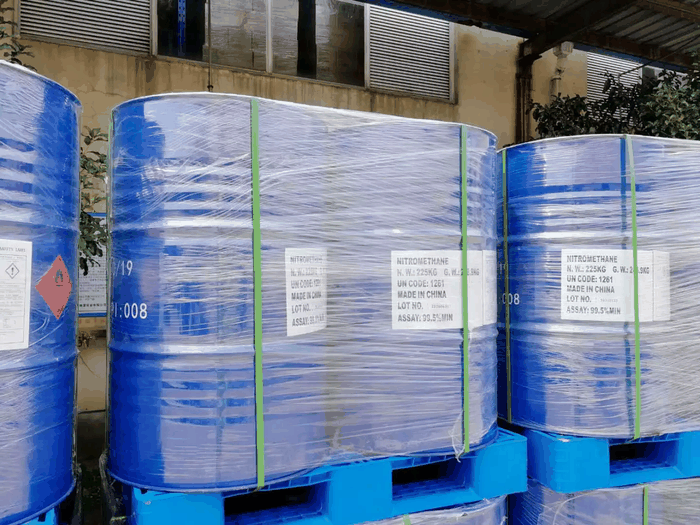Octylamine
Synonym(s):n-Octylamine;1-Aminooctane;1-Aminooctane, Caprylamine;Caprylamine;Octylamine
- CAS NO.:111-86-4
- Empirical Formula: C8H19N
- Molecular Weight: 129.24
- MDL number: MFCD00008247
- EINECS: 203-916-0
- SAFETY DATA SHEET (SDS)
- Update Date: 2025-09-25 17:15:13

What is Octylamine?
Chemical properties
CLEAR LIQUID
The Uses of Octylamine
1-Octylamine is used as a precursor to prepare chemicals. It finds application in functional fluids and as a laboratory reagent. Further, it is used as a reactant in the preparation of 2H-indazoles and 1H-indazolones, which are used as myeloperoxidase(MPO) inhibitors.
The Uses of Octylamine
Octylamine is mainly used to synthesize amphiphilic copolymers for polymer coating of quantum dots (QDs) to make them water-soluble.
Other applications:
- Synthesis of 2-cyano-N-octylacetamide by reacting with ethyl cyanoacetate.
- To induce uniformity for synthesizing uniform ultrathin metal sulfide nanostructures.
Definition
ChEBI: An 8-carbon primary aliphatic amine.
Production Methods
Specific uses were not located in the literature. 1-Octylamine is manufactured under the tradenameArmeen8D(Armak).
Synthesis Reference(s)
Chemistry Letters, 7, p. 1057, 1978
The Journal of Organic Chemistry, 47, p. 4327, 1982 DOI: 10.1021/jo00143a031
Tetrahedron Letters, 11, p. 3411, 1970
General Description
A yellow liquid with an ammonia-like odor. Insoluble in water and less dense than water. Hence floats on water. Contact may irritate skin, eyes and mucous membranes. May be toxic by ingestion. Used to make other chemicals.
Air & Water Reactions
Insoluble in water.
Reactivity Profile
OCTANAMINE neutralizes acids in exothermic reactions to form salts plus water. May be incompatible with isocyanates, halogenated organics, peroxides, phenols (acidic), epoxides, anhydrides, and acid halides. Flammable gaseous hydrogen may be generated in combination with strong reducing agents, such as hydrides.
Health Hazard
TOXIC; inhalation, ingestion or skin contact with material may cause severe injury or death. Contact with molten substance may cause severe burns to skin and eyes. Avoid any skin contact. Effects of contact or inhalation may be delayed. Fire may produce irritating, corrosive and/or toxic gases. Runoff from fire control or dilution water may be corrosive and/or toxic and cause pollution.
Fire Hazard
Combustible material: may burn but does not ignite readily. When heated, vapors may form explosive mixtures with air: indoors, outdoors and sewers explosion hazards. Contact with metals may evolve flammable hydrogen gas. Containers may explode when heated. Runoff may pollute waterways. Substance may be transported in a molten form.
Flammability and Explosibility
Flammable
Properties of Octylamine
| Melting point: | −5-−1 °C(lit.) |
| Boiling point: | 175-177 °C(lit.) |
| Density | 0.782 g/mL at 25 °C(lit.) |
| vapor pressure | 1 mm Hg ( 20 °C) |
| refractive index | n |
| Flash point: | 145 °F |
| storage temp. | Store below +30°C. |
| solubility | 0.32g/l |
| form | Liquid |
| pka | 10.65(at 25℃) |
| color | Clear |
| PH | 11.8 (100g/l, H2O, 25℃) |
| Odor | strong fishy ammonia-like odor |
| explosive limit | 1.6-8.2%(V) |
| Water Solubility | 0.2 g/L (25 ºC) |
| BRN | 1679227 |
| Dielectric constant | 3.5800000000000001 |
| CAS DataBase Reference | 111-86-4(CAS DataBase Reference) |
| NIST Chemistry Reference | 1-Octanamine(111-86-4) |
| EPA Substance Registry System | Octylamine (111-86-4) |
Safety information for Octylamine
| Signal word | Danger |
| Pictogram(s) |
 Flame Flammables GHS02  Corrosion Corrosives GHS05  Skull and Crossbones Acute Toxicity GHS06  Environment GHS09 |
| GHS Hazard Statements |
H226:Flammable liquids H314:Skin corrosion/irritation H332:Acute toxicity,inhalation H335:Specific target organ toxicity, single exposure;Respiratory tract irritation H410:Hazardous to the aquatic environment, long-term hazard |
| Precautionary Statement Codes |
P210:Keep away from heat/sparks/open flames/hot surfaces. — No smoking. P273:Avoid release to the environment. P280:Wear protective gloves/protective clothing/eye protection/face protection. P303+P361+P353:IF ON SKIN (or hair): Remove/Take off Immediately all contaminated clothing. Rinse SKIN with water/shower. P305+P351+P338:IF IN EYES: Rinse cautiously with water for several minutes. Remove contact lenses, if present and easy to do. Continuerinsing. |
Computed Descriptors for Octylamine
| InChIKey | IOQPZZOEVPZRBK-UHFFFAOYSA-N |
Octylamine manufacturer
JSK Chemicals
New Products
4,4-Difluoropiperidine hydrochloride tert-butyl 9-methoxy-3-azaspiro[5.5]undecane-3-carboxylate Indole Methyl Resin N-Isopropylurea N,N-Dicyclohexylcarbodiimide(DCC) MELDRUMS ACID 5-METHYLISOXAZOLE-4-CARBOXYLIC ACID Magnessium Bis glycinate Zinc ascorbate 1-bromo-2-butyne 2-acetamidophenol 9(10H)-anthracenone Erythrosin B, 4-Piperidinopiperidine 2-((4-morpholinophenylamino) (methylthio) methylene) malononitrile 2,4-dihydroxybenzaldehyde 3-(4-morpholinophenylamino)-5-amino-1H-pyrazole-4-carbonitrile Methyl 2-methylquinoline-6-carboxylate 2,6-dichloro-4-nitropyridine 4-Bromo-2-chlorobenzonitrile 2-(benzylamino)acetic acid hydrochloride 4-(tert-Butoxycarbonylamino)but- 2-ynoic acid 3,4-dihydro-2H-benzo[b][1,4]dioxepine 1-Phenyl-1-cycloprppanecarboxylicacidRelated products of tetrahydrofuran








You may like
-
 111-86-4 98%View Details
111-86-4 98%View Details
111-86-4 -
 111-86-4 n-Octylamine, 98% 99%View Details
111-86-4 n-Octylamine, 98% 99%View Details
111-86-4 -
 n-Octylamine CAS 111-86-4View Details
n-Octylamine CAS 111-86-4View Details
111-86-4 -
 Octylamine, 99% CAS 111-86-4View Details
Octylamine, 99% CAS 111-86-4View Details
111-86-4 -
 n-OCTYLAMINE Extra Pure CAS 111-86-4View Details
n-OCTYLAMINE Extra Pure CAS 111-86-4View Details
111-86-4 -
 Octylamine CAS 111-86-4View Details
Octylamine CAS 111-86-4View Details
111-86-4 -
 Octylamine CAS 111-86-4View Details
Octylamine CAS 111-86-4View Details
111-86-4 -
 Octylamine CAS 111-86-4View Details
Octylamine CAS 111-86-4View Details
111-86-4
